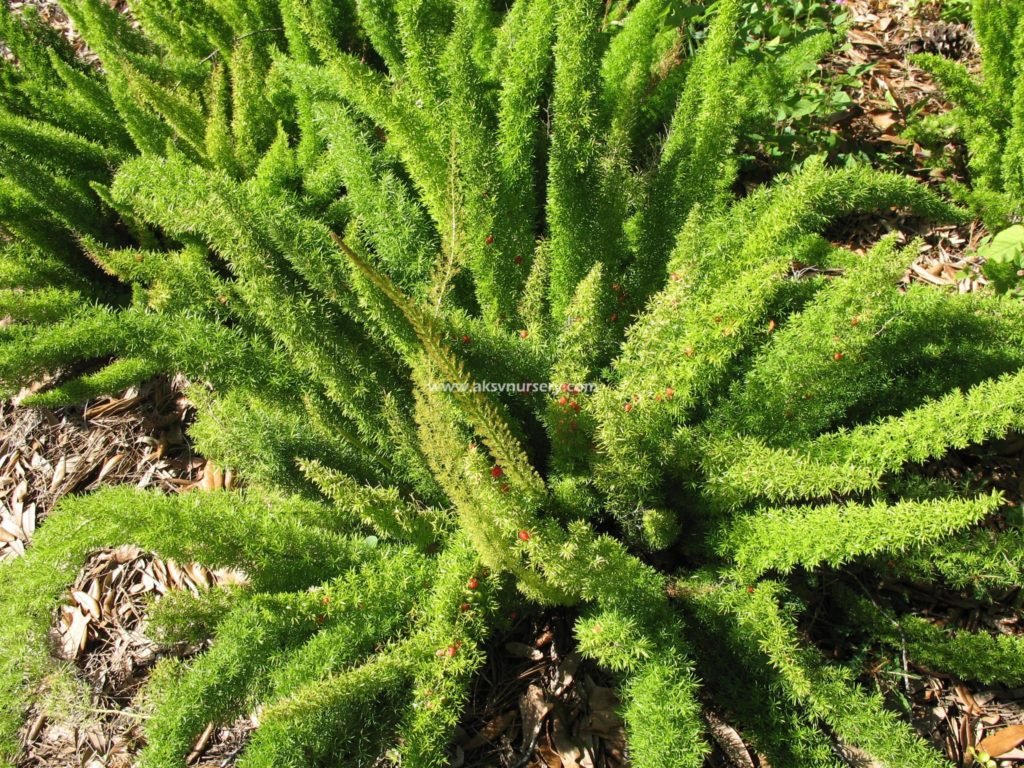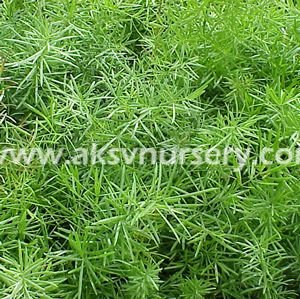Family: Asparagaceae
Emerald Asparagus Fern, Fox Tail
Origin: South Africa
Asparagus densiflorus is a scrambling, slightly woody plant with upright or trailing branches up to 1 m long. The best known forms belong to the so-called emerald ferns of the Asparagus densiflorus ‘Sprengeri’ group. These plants form large cushions with long, arching stems more or less densely covered with dark green, needle-like leaves. The plants of this group can be used as groundcovers in shade as well as in full sun, or in large containers or hanging baskets. The cultivars ‘Cwebe’ and ‘Myersii’ form more upright plants, particularly ‘Myersii’, which looks very different, with its compact cat’s tail-like fronds. Asparagus densiflorus ‘Myersii’ looks best when grown in shade or semi-shade. Asparagus densiflorus flowers are small, most often white or pale pink and are very sweetly scented. The flowering of the plants can be rather erratic, with the plants having a good flowering year on average only once every three years. The small flowers are followed by showy bright red berries, which each have one large black seed in them. The berries are attractive to birds and may be spread by them. Asparagus densiflorus grows in most soils and is fairly drought tolerant, but does much better in soil which is rich in organic matter and is watered regularly. To rejuvenate the plants, they can be cut back after flowering. The plants have extensive root systems with fairly large tubers, which are used in nature to provide food during long periods of drought in summer. They can be readily propagated by separating the tubers in fairly large clumps, or by sowing the seed in spring or early summer. The seed should be removed from the fleshy berries, placed in a suitable sowing medium in a warm spot or with bottom heating of about 80F and kept moist.









